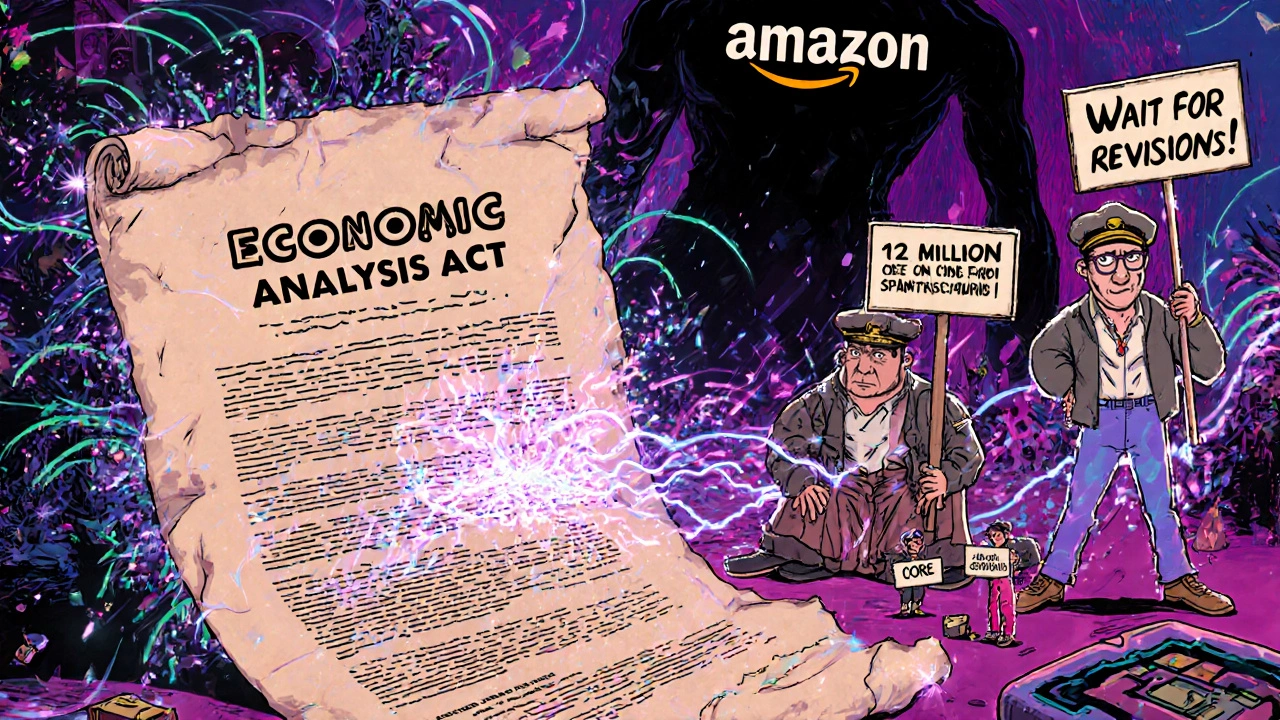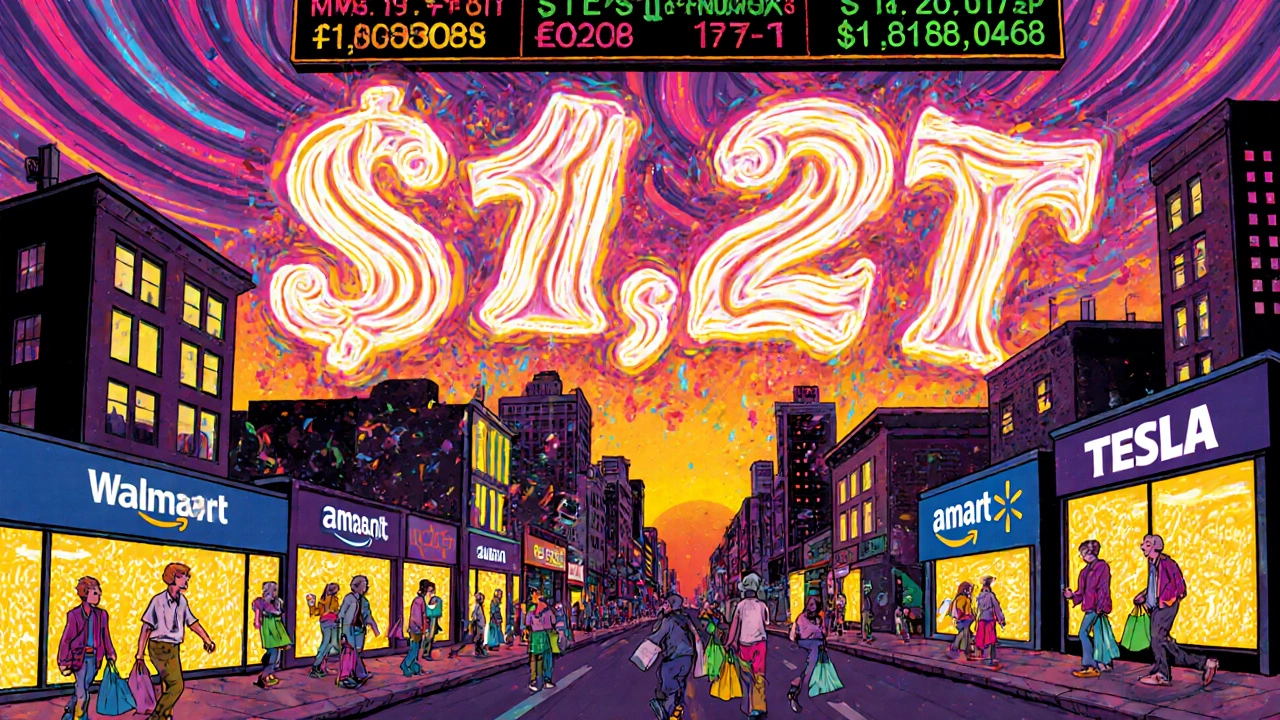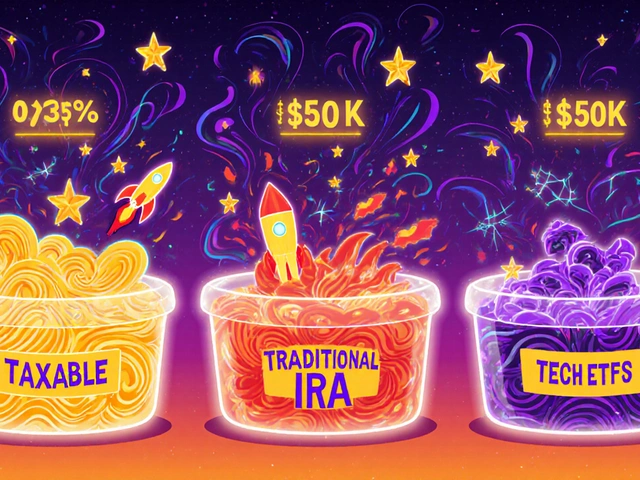Retail Sales Impact Calculator
Calculate how retail sales surprises impact the Consumer Discretionary ETF (XLY) and S&P 500 based on historical market reactions.
Estimated Market Impact
Every month, around the 13th, the U.S. Census Bureau drops a report that can move markets before breakfast. It’s not about earnings calls or Fed speeches. It’s something quieter, but just as powerful: retail sales reports. These numbers don’t just tell you how much people spent at Walmart or Amazon-they reveal whether the economy is heating up or cooling down, and they directly influence how stocks react, especially in the consumer-driven parts of the market.
What Retail Sales Reports Actually Measure
Retail sales reports track the total dollar value of goods and services sold by retailers directly to consumers. This includes everything from groceries and clothes to cars, gas, and online orders. But here’s the catch: the headline number isn’t the whole story. The Census Bureau releases two versions: total retail sales and core retail sales. Core retail sales strips out the most volatile categories-cars, gasoline, building materials, and food services-because those prices swing wildly with oil costs, weather, or seasonal trends. What’s left gives a clearer look at what people are really spending on day-to-day life.Why does this matter? Because consumer spending makes up nearly 70% of the U.S. economy. When people spend more, businesses earn more. When businesses earn more, they hire more, invest more, and eventually, their stock prices rise. Retail sales reports are the fastest snapshot we have of this behavior. While GDP data comes out quarterly and is revised months later, retail sales arrive just three weeks after the month ends. That speed makes it a critical tool for investors trying to get ahead of the curve.
Why the Stock Market Watches This Closely
The connection between retail sales and stocks isn’t theoretical-it’s measurable. Since 2010, the S&P 500 Consumer Discretionary Sector Index has shown a 0.78 correlation with monthly retail sales surprises. That means when sales beat expectations, stocks in this sector tend to jump. When they miss, they drop.Here’s how it plays out in real time. If retail sales come in 0.3 percentage points higher than analysts predicted, the Consumer Discretionary ETF (XLY) typically gains 1.2% over the next five trading days. The broader S&P 500? Only 0.3%. But if sales fall short by the same margin, XLY loses an average of 1.8%. That’s a two-to-one swing in favor of the consumer discretionary sector.
This isn’t random. It’s driven by what economists call the “wealth effect.” When stock prices rise, people feel richer-even if they haven’t sold anything. They spend more. Visa’s research shows that a 10% rise in the stock market correlates with a 0.9% increase in average credit card spending. And it’s getting stronger. In the early 2000s, every 1% increase in household wealth led to 0.05% more spending. Today, that number is 0.08%. People are more responsive to market moves than ever, thanks to constant access to stock prices on their phones.
What’s Missing from the Report
Despite its importance, the retail sales report has blind spots. It doesn’t track every dollar spent. Online sales now make up 15.9% of total retail spending-up from just 4.8% in 2011. But many direct-to-consumer brands, subscription services, and digital marketplaces aren’t fully captured in the Census Bureau’s survey. Reddit users and financial analysts alike point out that the report misses 12-15% of actual consumer spending, especially from newer e-commerce players.Also, the data is nominal-it doesn’t adjust for inflation. So a 1% rise in sales could just mean prices went up, not that people bought more. Economists often convert the numbers using the PCE price index to get real spending growth. But most traders don’t wait for that adjustment. They react to the headline number, which can create false signals.
Revisions are another issue. Initial reports are often revised by 0.2 percentage points on average. In 17% of cases since 2010, revisions have been bigger than 0.5 points. That means a “strong” report one month might turn out to be weak the next. Many traders get burned chasing these early numbers.

How Professionals Use Retail Sales Data
Smart investors don’t rely on retail sales alone. They layer it with other data to get a fuller picture. Here’s what the best ones track:- Same-store sales from major retailers like Target or Home Depot-released weekly and often ahead of the official report.
- Credit and debit card transaction data from Visa, Mastercard, or Plaid, which show spending trends with only a 2-3 day lag.
- Restaurant reservations via OpenTable or Resy, which signal discretionary spending on experiences.
- Consumer sentiment surveys from the University of Michigan, which track how people feel about the economy-even if their spending hasn’t changed yet.
According to Bloomberg Intelligence, combining retail sales with gas prices, interest rate spreads, and retail stock indexes improves forecast accuracy by 22%. That’s not a small edge-it’s the difference between guessing and knowing.
One key detail professionals watch: December. Retail sales almost always spike 8-10% that month due to holidays. January usually drops 3-4% as people pay off credit cards. If you don’t account for seasonal patterns, you’ll misread the data. A 1.7% jump in January might look great-but if it’s just a rebound from a post-holiday slump, it’s meaningless.
The Bigger Picture: Spending, Debt, and Market Sentiment
Consumer spending isn’t just about income-it’s also about access to credit. In Q2 2025, U.S. consumer debt rose 3.3% year-over-year, slightly below the 20-year average. But credit card debt jumped 5.9%. That’s a red flag. People are using debt to keep spending, even as interest rates stay high. That’s not sustainable long-term.And sentiment matters. In May 2024, consumer confidence hit its second-lowest point in history after stock market drops and tariff fears. Even though spending didn’t collapse, the psychological damage lingered. As of Q2 2025, confidence is still 8.7 points below its 2024 peak. That gap shows how markets and spending feed each other in a loop: falling stocks → lower confidence → slower spending → weaker earnings → lower stocks.
Meanwhile, the retail landscape is changing. The top 100 retailers now control 62% of sales, up from 48% in 2010. Amazon, Walmart, and a handful of others are swallowing smaller players. That makes the data more concentrated-and more vulnerable to distortions. If one big retailer has a bad month, the whole report looks weak, even if the broader economy is fine.

What’s Next for Retail Sales Data
The Census Bureau knows the data needs updating. By Q1 2026, they plan to use machine learning to improve seasonal adjustments and better capture digital spending patterns. Private companies are already ahead: Plaid processes 12 million daily transactions. Visa analyzes 200 billion annual transactions. NielsenIQ tracks 1.5 billion shopping trips globally.Yet, despite all these alternatives, 92% of institutional investors still rely on the official retail sales report. Why? Because it’s standardized, transparent, and backed by law. The Economic Analysis Act of 1987 ensures consistency. Private data is faster but harder to compare across time.
The real challenge? The gap between what’s measured and what’s actually spent. If current trends continue, the report could miss 30% of consumer spending by 2030. That’s not a minor flaw-it’s a structural risk. Investors who ignore this shift will keep reacting to outdated signals.
How to Use This Data Without Getting Tricked
If you’re an investor, here’s how to use retail sales data without falling into traps:- Focus on core retail sales-not the headline number. It’s cleaner and directly tied to GDP.
- Wait for revisions-don’t trade on the first release. Give it 2-3 weeks for accuracy.
- Compare to consensus forecasts-a 0.3% beat or miss is the threshold for market movement.
- Look at trends, not single months-one bad month doesn’t mean a recession. Three months in a row do.
- Combine it with other data-credit card spending, restaurant bookings, and sentiment surveys fill in the gaps.
Remember: retail sales don’t predict the future. They reflect the present. But in a market where timing matters, the present is often the best signal you’ve got.
What is the difference between total retail sales and core retail sales?
Total retail sales include all spending at retail stores, including cars, gas, building materials, and food services. Core retail sales removes those categories because they’re more volatile and don’t reflect steady consumer behavior. Core sales are the version used in GDP calculations and are the one investors watch most closely.
Why do retail sales reports move the stock market?
Because consumer spending makes up nearly 70% of the U.S. economy. When people spend more, companies earn more, which leads to higher profits and stock prices-especially in consumer-focused sectors like retail, travel, and entertainment. Retail sales are the fastest indicator we have of this trend, so traders react quickly to any surprises.
How accurate are retail sales reports?
They’re timely but not perfect. Initial reports are revised an average of 0.2 percentage points, and major revisions (over 0.5 points) happen in 17% of cases. The data also doesn’t fully capture digital spending from direct-to-consumer brands or subscriptions. That’s why smart investors combine it with credit card data and same-store sales for a clearer picture.
Which stocks are most affected by retail sales data?
Consumer discretionary stocks are hit hardest. That includes companies like Amazon, Nike, Home Depot, and Tesla-any business that sells non-essential goods and services. The XLY ETF, which tracks this sector, has shown a 0.78 correlation with retail sales surprises since 2010. Staples like groceries and utilities are less affected.
Is retail sales data still reliable in the age of e-commerce?
It’s becoming less complete. Online sales now make up nearly 16% of total spending, but many digital-first brands aren’t fully captured in the survey. Experts estimate the report misses 12-15% of actual consumer spending. While it’s still the gold standard for official data, investors increasingly use private transaction data from Visa, Plaid, or Mastercard to fill the gaps.






Comments
The core retail sales metric is essentially the economy’s heartbeat stripped of noise-cars and gas are just volatility parasites. What’s wild is how the wealth effect has morphed into a feedback loop where your phone’s stock app is now a spending trigger. We’re not just consuming goods anymore; we’re consuming market sentiment in real time. The 0.08% spending elasticity per 1% wealth gain? That’s behavioral finance on steroids. And yet, we still anchor to a 1987 dataset that can’t parse a Shopify store. The real revolution isn’t in the data-it’s in the collective delusion that a single headline number can capture a fragmented, algorithm-driven consumer psyche.
Oh please. You’re telling me we’re still using a report that doesn’t even count my monthly subscription to a niche AI art generator or the $20 I drop on TikTok Shop glow-in-the-dark socks? This is like measuring the ocean with a teacup and calling it hydrology. And don’t get me started on ‘core’ sales-removing cars and gas is like saying ‘let’s ignore the fact that people actually drive to Walmart.’ The only thing more outdated than this report is the guy who still thinks GDP is a reliable proxy for happiness. Meanwhile, Plaid’s seeing 12 million transactions a day while the Census Bureau’s still using Excel macros from 2007. I’m not even mad-I’m just disappointed. This isn’t data. It’s a museum exhibit.
Thanks for sharing this. Very helpful. 😊 I think the gap between official data and real spending is getting bigger-especially with how people shop now. Maybe next time they update the report, they can include small digital sellers too. I hope they fix it soon.